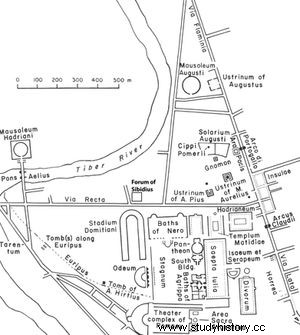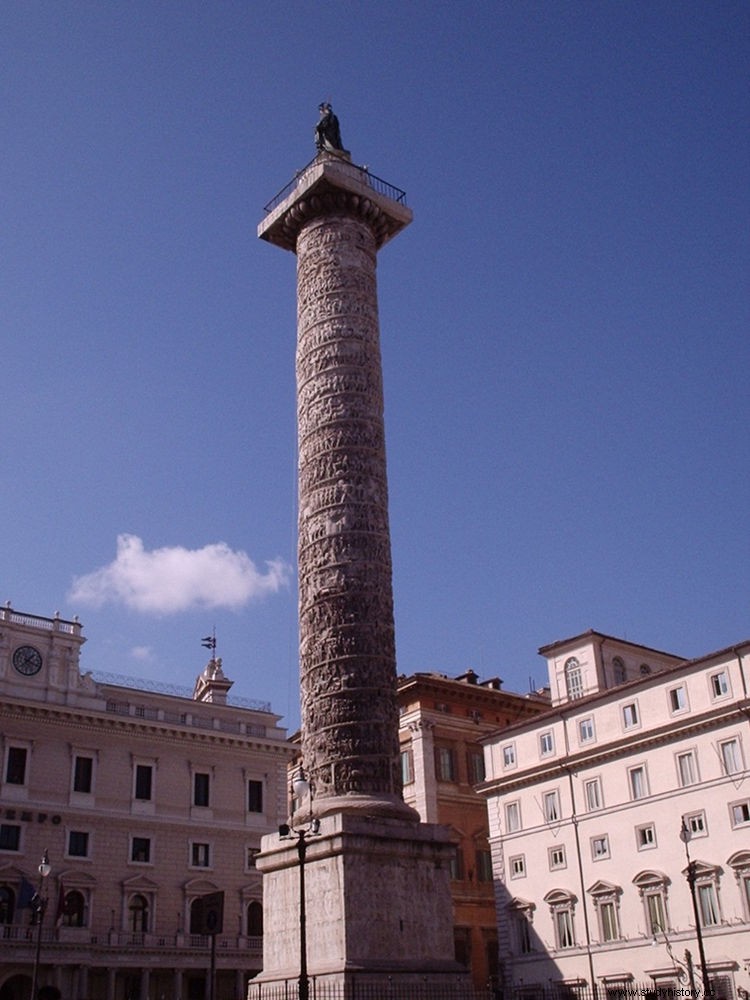By Carlos Machado, University of Saint Andrews (Scotland)
For centuries, the monumentality and grandeur of the city of Rome have captured the imagination of visitors, enthusiasts and the general public. The reconstructions that we see in films and TV miniseries of the great imperial monuments reinforce, in the imagination of their audiences, the idea that the capital of the Roman Empire was a city built by and for the elites, with ordinary women and men being mere spectators. . This vision has also dominated the approaches and interests of historians and archaeologists:the working classes, the poor, the destitute, never failed to figure in these works (in some cases in influential analyses). But they were treated as extra data, a symptom of the contradictions of imperial society or, at best, mere users and regulars of spaces built by senators, emperors, or triumphant generals.
New perspectives have been developing in recent years, following innovative work done in other regions of the empire and benefiting from the relatively recent development of more refined techniques for excavating urban centers. Throughout the 1980s, the excavation of the complex built by Cornelius Balbo in the southern Campo de Mars in 13 BC. allowed archaeologists to examine the stratigraphy of centuries of history and continued use, from the monument's inauguration in its Augustan splendor to its conversion into a productive area in the last centuries of antiquity, including the development of an apartment building in the immediate vicinity. The everyday and the subaltern go hand in hand, accompanying the monumental and the extraordinary, is what this complex suggests.
The Balbi Crypt (as the theater and the attached cryptoportico are known) show that, in order to understand the city of Rome as the product of its concrete history, it is necessary to go beyond the great constructive projects and consider the forms of use developed there and how they redefine the city. and its spaces. This is not an undertaking without its difficulties:huge areas of the city were excavated with little concern for anything other than their grandeur (even when stratigraphic methods were already applied elsewhere). The out imperial empires, for example, were excavated and studied in the years of the fascist regime, but it was only in the campaigns to expand the excavated area, in the 2000s, that for the first time some idea of the stratigraphy – and consequently the forms of use – of this area was had. . Even so, it is possible to identify the role played by groups beyond the elite in the construction of urban space, making use of available sources to develop a new, more concrete and more complex image of Rome. The Campo de Marte area, specifically, is an ideal area for this.

The vast valley between the walls of Republican Rome and the curve of the River Tiber had a very diverse use throughout antiquity. The area to the south of Campo, closer to the Capitol, was used early on for various civic-religious purposes, with the installation of Circo Flamínio, where troops gathered waiting for their triumphal entry into the city, the Temple of Belona, part of the ritual of declaring war, and the Saepta, where elections were held annually. Further north, between Via Flaminia and the river, monumental tombs, suburban villages and woods dominated the landscape. This partly explains why Emperor Augustus chose this area to build his magnificent Mausoleum and sundial. Our knowledge comes especially from texts written by the elite, combined with the remains of grand imperial buildings, and it is tempting to believe that monumentality and leisure dominated the area. However, a reference in the Annals of Tacitus (3.9) alerts us to another image:when Piso returned to Rome for his trial, after the death of Germanicus, he anchored his ship in the area of the Ciconiae, near the Mausoleum of Augustus, causing great confusion. . The reason for this is that there was an important river port there, where goods brought from Northern Italy by the Tiber were unloaded, measured, sold, and stored. An area of great concentration of sailors, workers and traders, therefore, and not a monumental park.
The transformation of this zone continued throughout the imperial period. Although still very little excavated, the Campo de Marte is famous for the large amount of insulae (apartment buildings), porticos and tabernae built in the first centuries of the empire. The monumental investment of emperors was not made to the exclusion of more popular forms of use, but in conjunction with them. This is demonstrated by a fascinating inscription from the early 3rd century AD. – actually two inscriptions (CIL VI, 1585a-b), one copying a letter sent by the imperial freedman Adrastus and the other with the emperor's reply and the orders sent to the responsible administrators. Adrastus was (with his family) in charge of tending to Marcus Aurelius' column, a large column decorated with reliefs depicting the military campaigns of the dead emperor in 180 AD. In his letter, he asked for permission to build, with his own resources, a dwelling near the monument. The imperial reply not only gave him permission but instructed him to use building materials that he could find in the “shacks” (tuguria ) that occupied the area. The use of the term “tugurium ”, usually associated with poor peasant housing, alerts us to the presence of groups that could not pay the rent of an apartment on an insula. The fact that these buildings could be used as a source of construction material is even more exciting:they are constructions, at least in parts, made of solid, reusable materials; maybe bricks or tiles.

This “intensive” use of the Field of Mars continued during later centuries, especially in Late Antiquity. This is indicated in a law, part of a longer constitution, addressed by Emperors Arcadius and Honorius to the people of Rome in 397 (Theodosian Code, 14.14.1). In it, the people are informed that anyone who tries to build a “house or shack” (casas seu tuguria ) in that area would have all his possessions confiscated and he would be expelled from the city of Rome. The law raises a number of issues that we do not have space to discuss here, but it is worth remembering that it was in this area that the Senate had built, a few years earlier, two triumphal arches celebrating the Valentinian and Theodosian dynasties. It was from this area that emperors now entered Rome, after visiting St. Peter's Basilica. More than a sign of the “decadence” or “decline” of ancient Rome, the popular occupation of the Champs de Mars was a sign of the continued vitality of the (still) capital of the empire, and an important reminder of how groups far removed from the elites could participate in the production of urban space in a decisive way.
